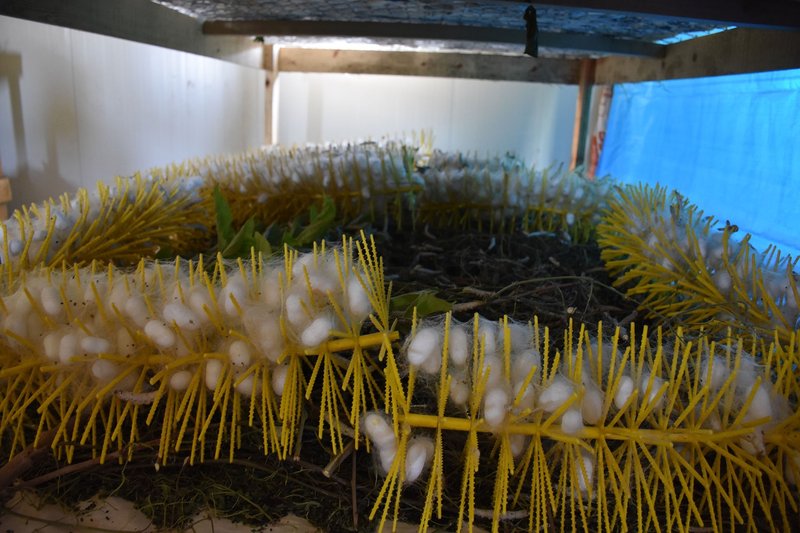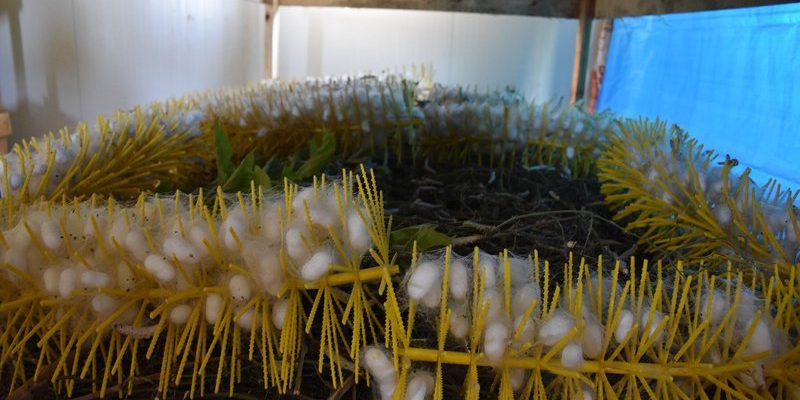
So, why silkworms? These little critters are not only relatively easy to care for but also require minimal space and resources. Plus, they can be a fun educational experience for kids and adults alike. You might be wondering what you need to get started and how it all works—no worries! I’ll walk you through everything, step by step. Let’s dive into the world of silkworm cultivation together!
What Are Silkworms and Why Raise Them?
Silkworms, specifically the *Bombyx mori* species, are the larvae of silk moths and are famous for producing silk. Raising silkworms can feel like stepping into a living science experiment. They feed primarily on mulberry leaves, which are nutrient-rich and easy to grow, making them a perfect choice for urban farming.
Raising silkworms can benefit you in several ways:
- Eco-Friendly Material: Silk is a natural, biodegradable fiber, unlike synthetic materials that harm the environment.
- Educational Experience: Silkworms can teach you and your family about life cycles, biology, and sustainability.
- Self-Sufficiency: Producing your own raw silk can be a rewarding process.
Cultivating silkworms is a fantastic way to connect with nature, even in the heart of a city. Plus, they don’t need a large footprint, making them ideal for microfarms.
Setting Up Your Microfarm
Creating a mini silkworm farm in your apartment or backyard is quite simple! All you really need is a small space, some basic supplies, and a bit of patience. Here’s what you’ll need:
- Space: A small shelf or a dedicated area, such as a closet or a corner of your kitchen.
- Containers: Breathable containers like mesh boxes or simple plastic bins will work well.
- Temperature Control: Silkworms thrive in a temperature range of 77°F to 86°F (25°C to 30°C).
- Mulberry Leaves: You can grow your own or purchase them from local sources or online.
Here’s a tip: keep things organized! Label your containers and design your space so that you can easily access food and monitor your silkworms’ growth. After all, it’s a small but mighty operation!
Feeding Your Silkworms
Feeding your silkworms is one of the most crucial aspects of their care. Silkworms eat a lot—especially when they’re growing! You’ll need to provide them with fresh mulberry leaves every day. Here’s how you can ensure they stay well-fed:
1. Freshness is Key: Always give them fresh, clean leaves. Wilted leaves won’t cut it!
2. Quantity Matters: A single silkworm can consume a significant amount of leaves as they grow. Prepare for this in your microfarm setup.
3. Monitor Their Growth: Watch how quickly they eat and adjust your feeding schedule as they get larger.
If you can’t find mulberry leaves, alternatives like commercial silkworm chow are available, but check the ingredients to ensure they’re nutritious.
Caring for Silkworms: Temperature and Humidity
Temperature and humidity play a huge role in keeping your silkworms happy and healthy. They thrive in warm environments, but if it gets too hot, it can be harmful. Here’s how to maintain the right conditions:
– Temperature: Aim for a steady temperature between 77°F and 86°F. You can use a simple thermometer to keep track.
– Humidity: Silkworms prefer a humid environment, around 60-80%. You can achieve this by misting the air gently or using a small humidifier nearby.
Here’s a little secret: avoid exposing them to direct sunlight, as it can cause the temperature to spike. A shaded area is ideal for their growth.
Understanding the Life Cycle of Silkworms
Watching silkworms grow is like witnessing magic! Their life cycle consists of four main stages: egg, larva, pupa, and adult moth. Let’s break it down:
1. Egg Stage: Silkworms begin as tiny eggs laid by female moths. It takes about 10 days for the eggs to hatch.
2. Larva Stage: After hatching, they enter the larval stage, where they will grow rapidly, shedding their skins several times.
3. Pupa Stage: Once they reach full size, they will cocoon themselves in silk and enter the pupa stage, which lasts about two weeks.
4. Adult Stage: Finally, adult moths emerge from the cocoons, ready to start the cycle again.
Understanding their life cycle can help you manage care effectively and predict when your silkworms will be producing silk.
Harvesting Silk: The Final Stage
Once your silkworms have completed their cocooning process, it’s time for the most exciting part: harvesting silk! Here’s how to do it without damaging those beautiful cocoons:
– Timing: Wait about 10-14 days after the larvae have finished spinning their cocoons.
– Gathering: Use a pair of scissors to carefully cut the cocoons from the containers.
– Boiling: To extract silk, you’ll need to boil the cocoons in water for a few minutes to kill the pupae without damaging the silk threads.
This might seem overwhelming at first, but once you get the hang of it, you’ll find it’s quite rewarding to see the fruit of your labor!
Challenges and Solutions in Silkworm Cultivation
Like any farming endeavor, silkworm cultivation can have its hurdles. But don’t worry; most challenges are manageable. Here are a few common issues you might encounter and how to solve them:
– Overcrowding: If your silkworms grow too large in their containers, they’ll compete for space. Regularly check their growth and transfer them to larger containers as needed.
– Mold: If you notice mold on the leaves or in the container, it’s time to clean things up. Remove contaminated leaves and ensure good air circulation.
– Temperature Fluctuations: If your microfarm is in an area prone to temperature changes, consider using a heat pad or heating lamp to maintain comfort.
Facing these problems head-on allows you to create a thriving little ecosystem in your home.
Silkworm cultivation in urban microfarms is not just about producing silk. It’s an enriching journey that connects you with nature, provides educational opportunities, and fosters self-sufficiency right in your own home. By following the steps laid out, you can turn your curiosity into a rewarding endeavor that’s both sustainable and fascinating.
So, gather your supplies, create your microfarm, and step into the captivating world of silkworms. You never know what wonderful surprises await you along the way! Happy farming!

